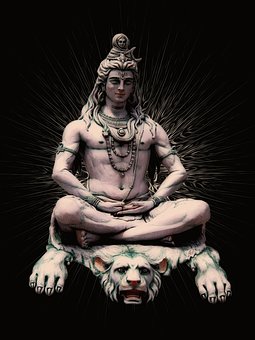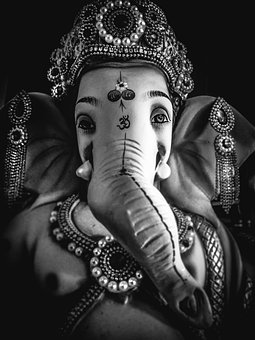1) Hinduism is somewhere around 5000 years of age
Hinduism is one of a couple of old religions to make due into current occasions. The assortment of customs that create advanced Hinduism have created over essentially the beyond 5000 years, starting in the Indus Valley locale (in the countries of current India and Pakistan), in what was the biggest progress of the antiquated world. There could be no 'author' of Hinduism, nor single prophet or introductory instructor. Hindus accept their religion has no recognizable start or end and, accordingly, regularly allude to it as Sanatana Dharma (the 'Everlasting Way'). Concerning the actual name, 'Hindu' is a word originally utilized by Persians, tracing all the way back to the sixth century BCE, to portray individuals living past the Indus River. At first it didn't have a particular strict undertone. The strict significance of the term didn't produce for generally an additional 1000 years.
2) The Vedas are one of Hinduism's numerous essential strict messages
Hinduism doesn't have a solitary blessed book that guides strict practice. All things considered, Hinduism has a huge assortment of profound texts that guide enthusiasts. First among these are the Vedas ("information" in Sanskrit), an assortment of songs on the heavenly powers of nature introducing key Hindu lessons. The Vedas, viewed as acknowledged (uncovered) timeless realities, were passed down by means of an oral custom for millennia prior to being recorded. Hindu way of thinking was additionally evolved in the Upanishads. This way of thinking was repeated in the Puranas, the Ramayana, and the Mahabharata (the world's longest epic sonnet), just as the Bhagavad Gita. Endless biographies, reverential verse, and editorials by sages and researchers have likewise added to the otherworldly arrangement and practice of Hindus.
3) Hinduism is one of four 'Dharmic' or 'Indic' customs
Hinduism, Buddhism, Jainism, and Sikhism can be alluded to as the "Dharmic" or "Indic" customs. The Dharma customs share an extensively comparative perspective, and offer numerous otherworldly ideas, like dharma, karma, samsara, and moksha—however every religion comprehends and deciphers them in an unexpected way.
4) Hinduism sees the Heavenly present in all presence
The most unfathomable single otherworldly truth introduced through the Vedas is that Brahman (generally comprehended in English as 'the Outright' or 'the Heavenly') infests the whole universe. This heavenly reality, or its fundamental nature, is available in all living creatures, timeless, and brimming with joy. Brahman is perceived as the reason for creation, just as its conservation, and disintegration and change, all done in a steady, rehashing cycle.
5) The idea of the Heavenly is perceived in various ways in various genealogies
Inside Hinduism there is a wide range of understandings about the idea of Brahman. A few Hindus accept that Brahman is limitless and amorphous, and can be venerated all things considered, or in various structures. Different Hindus accept that the Heavenly is limitless and has a supernatural structure. For instance, a few Vaishnavas accept that the one preeminent structure is Krishna, while Shaivites call this structure Shiva.
6) Hinduism reveres the Heavenly in both male and female, creature structure
Since Hindus accept that Brahman can take structure, they acknowledge that there are an assortment of manners by which all individuals can interface with the Heavenly. This general Godliness is venerated in both male and female structures. The female structure is known as devi, which is an indication of shakti (energy or inventive power). Different structures consolidate male and female viewpoints together and some look like creatures, like Ganesh or Hanuman. Every one of these structures has an emblematic significance. Hindus have since a long time ago recounted to anecdotes about these different types of the Heavenly to rouse dedication and ingrain moral qualities.
7) Hindus implore various parts of the Heavenly
Hindus implore various types of Brahman as signs of specific heavenly characteristics or forces. For instance: Ganesh is regarded by Hindus (just as in some cases by adherents of other Indian religions) as the remover of snags and respected for his extraordinary insight, and is frequently summoned prior to starting any significant errand or venture; Saraswati is the Goddess related with learning and astuteness; Lakshmi is venerated as the Goddess of Flourishing. God is accepted to have the taken human type of Rama to tell individuals the best way to experience the way of Dharma. Krishna is said to have come to kill evil and secure great. Shiva is venerated as the master of time and change. Besides, the conspicuousness of every one of the parts of the Heavenly fluctuates relying upon the genealogy of the singular Hindu.
8) Hindus use pictures in love to make the limitless fathomable to the human psyche
Hindus address the different types of God in sanctified pictures called murti. A murti can be made of wood, stone, or metals (and in some cases can be normally happening, instead of designed by human hands). Murti offer an approach to imagine and ponder upon Brahman, which because of its limitless nature is accepted to be outside the ability to comprehend of the human brain. Murti is frequently mistakenly deciphered as 'symbol' yet a more exact interpretation is 'epitome'. Hindu families lead their every day love at home raised areas and furthermore at sanctuaries on uncommon events. Numerous Hindus counsel masters (perceived otherworldly instructors and guides) for exhortation or replies to profound inquiries.
9) Hindus accept the spirit is timeless and is renewed in various structures

Hindus accept that the spirit, atman, is timeless. At the point when the actual body bites the dust the spirit is renewed in another body. This constant pattern of life, passing, and resurrection is called samsara. Resurrection is administered by karma: the rule that each activity (be it physical or mental) has an outcome, similar to circumstances and logical results. What a singular encounters in this life is the consequence of their past activities, either moves they have as of now made in this life or activities from a previous existence. What a singular demonstrations today means for the future, both as far as impacts felt later on in this life or in a future birth. However the impacts of karma make certain activities simpler or more hard to take, similarly as our own propensities impact our lives, this is anything but a deterministic or fatalistic framework. Maybe, we as a whole can openly pick acceptable behavior in any circumstance.
10) Hindus accept we each have four objectives throughout everyday life
Hindus accept we have four objectives throughout everyday life: Dharma (acting in a way helpful for otherworldly progression), Artha (the quest for material thriving), Kama (satisfaction in the material world), and Moksha (freedom from the connections brought about by reliance on the material world and from the pattern of birth and resurrection).











Comments
Post a Comment
if you have any dout pls comment